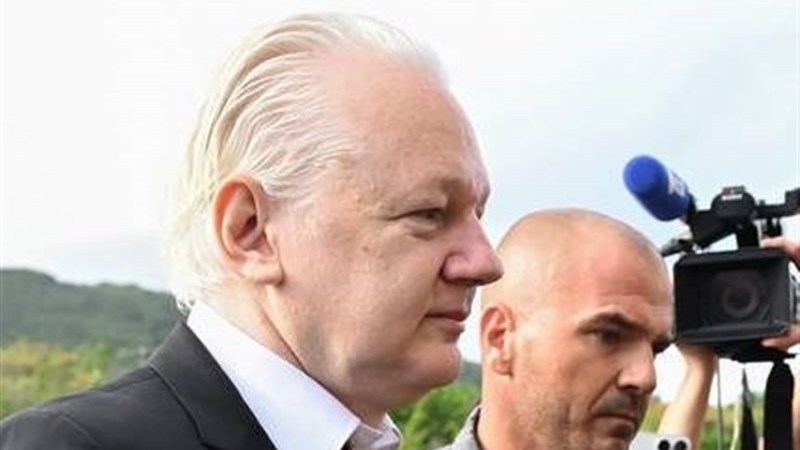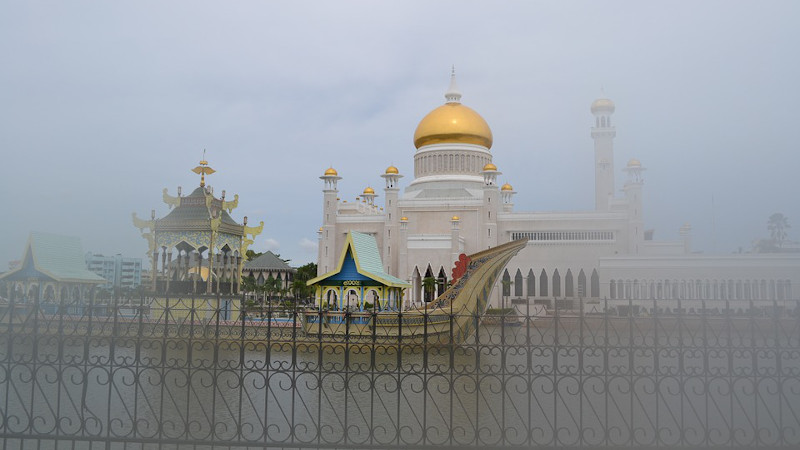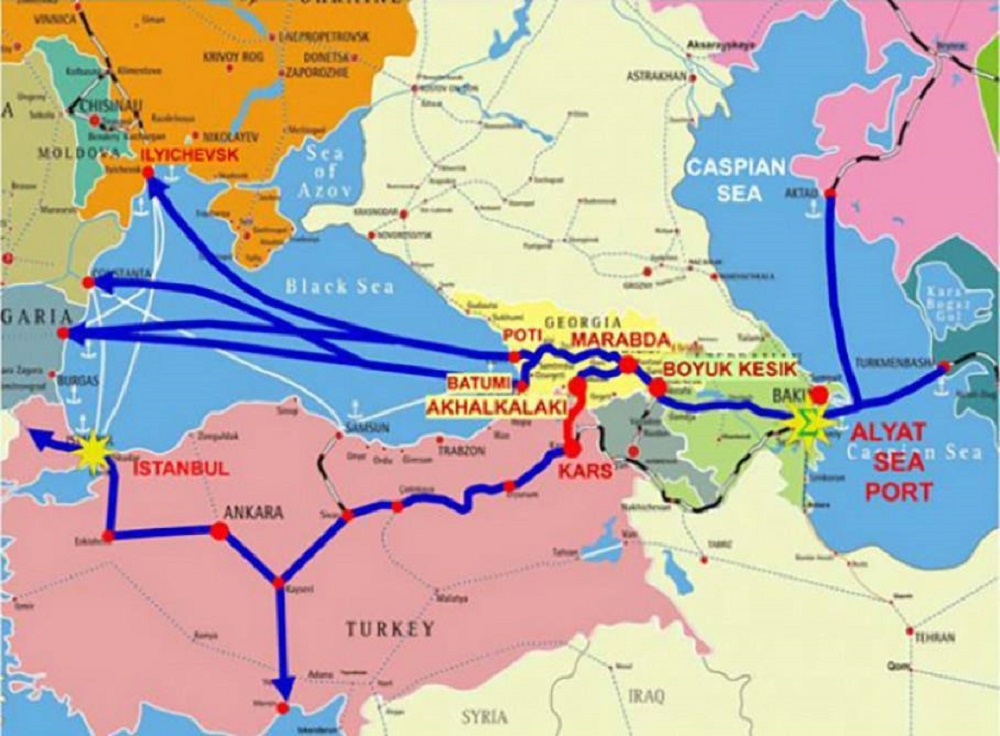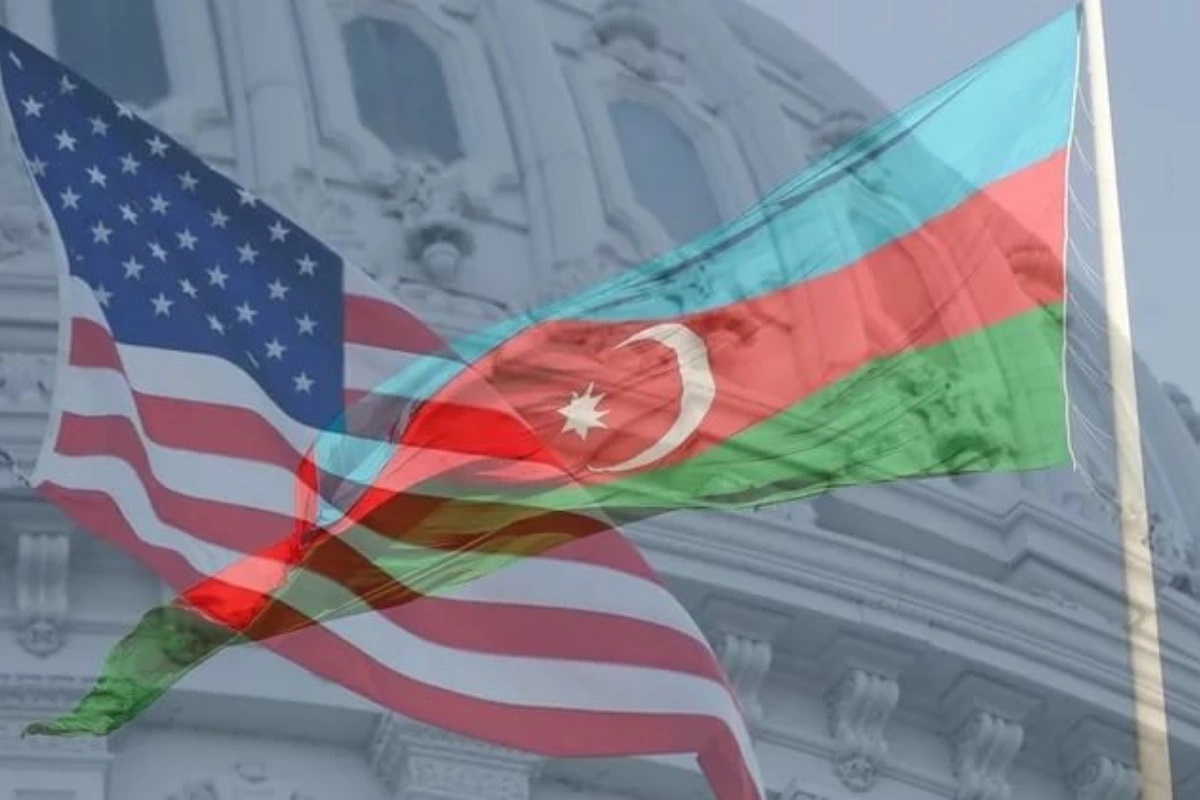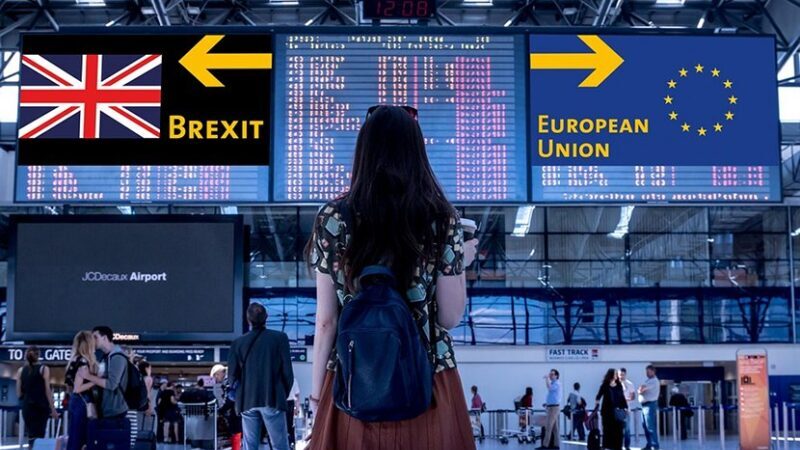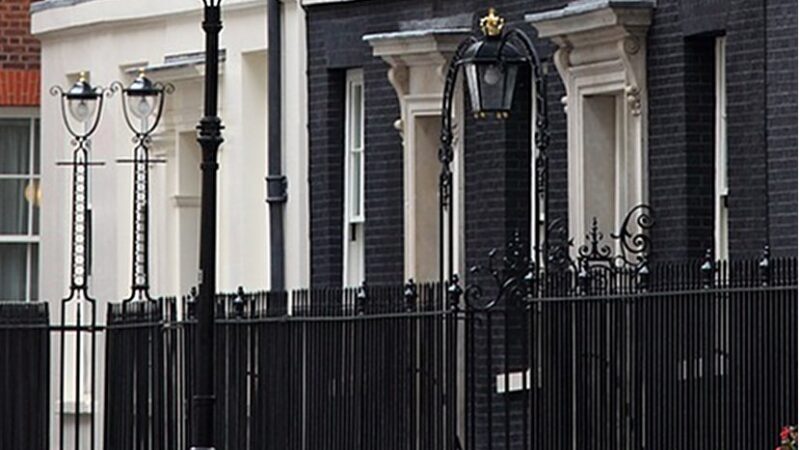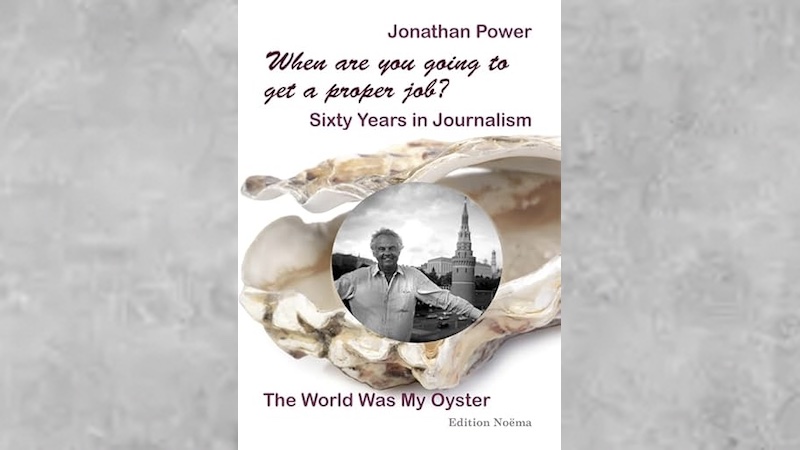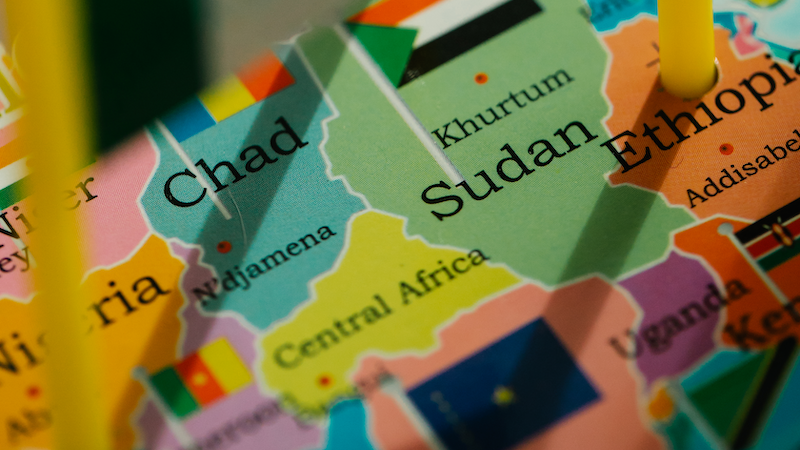
By Alden Young
Sudan Today
(FPRI) — Since fighting broke out between the Sudanese Armed Forces (SAF) and the government-sponsored paramilitary Rapid Support Forces (RSF) in April of 2023, according to the International Rescue Committee at least 25 million people out of a total population of roughly 48.7 million are in need of basic humanitarian aid. The crisis is escalating with fighting spreading to new parts of the country. Perhaps 37 percent of the country is confronting acute food insecurity.[1] Other statistics are also dire. Nine million people have been displaced within Sudan, while 1.7 million have been forced to flee to other countries. Most of the receiving countries such as Chad, Egypt, Ethiopia, and South Sudan are already vulnerable. Initially the conflict was most intense in the capital of Khartoum and in the western provinces of Darfur and Kordofan, but in the last few months it has also spread to regions like Gezira state, the traditional breadbasket of the country.[2] The International Rescue Committee reports that, “Sudan is now the country with the largest number of displaced people and the largest child displacement crisis in the world.”[3] Many migrants who are able to head to the eastern regions of Sudan hope to eventually transit to Saudi Arabia and the United Arab Emirates and from there potentially to other destinations.[4]
Ever since the outbreak of the conflict the international community has rallied to negotiate an end to the fighting. The United States and Saudi Arabia have teamed up to negotiate at least sixteen failed ceasefires, while the African Union, the Intergovernmental Authority on Development, and Egypt have all tried to develop alternative ceasefire and negotiating forums. In January, Mariel Ferragamo and Diana Roy assessed that “negotiation efforts were at a standstill.” [5]
Despite the magnitude of the crisis in Sudan a year after fighting broke out, the response from the international community has been paltry. The United Nations has asked for $2.7 billion dollars in order to address the dire humanitarian situation in the country. However, the conflict in Sudan, which is already a regional crisis involving neighbors such as Chad, the Central African Republic, South Sudan, Egypt, Libya, and Ethiopia, has largely been overshadowed by the conflicts in Ukraine and Gaza. To date, the United Nations says that it has received only $424.9 million dollars to address the situation in Sudan.[6] Some of the worst violence during the conflict has taken place in the state of West Darfur. In what many Darfurians experience as reminders of the violence that broke out nearly two decades ago. There have been many credible reports of sexual violence, mass expulsions, and ethnic cleansing. Notably, members of the Masalit ethnic group have been repeatedly targeted as supporters of the SAF by the RSF and their allied militias.[7]. The war in Darfur is in many ways a microcosm of the wider conflict, but it also points to the conflict’s direct origins in the long insurgency and counterinsurgency in Darfur.
The Origins of the Conflict: Awalad al-Bahar and Awalad al-Gharib
On April 15, 2023, during the last ten nights of Ramadan, violent clashes broke out in the Sudanese capital of Khartoum. While Khartoum has known many instances of civil unrest, violent protests, and severe bouts of state repression, the central districts have rarely been sites of sustained warfare. Omdurman, the western portion of the capital city, was attacked in 2008 by the Justice and Equality Movement, a Darfurian rebel force. This assault, which highlighted the capital’s vulnerability to attacks originating in the western provinces of Sudan, lasted only two days before being repelled and was largely confined to the capital’s western outskirts. Yet, in the minds of many residents of the capital, the 2008 raid was an uncomfortable reminder of the one-time sacking of the city in the late nineteenth century at the hands of the Mahdi Muhammad Ahmed’s armies.[8] Perhaps no one has come to symbolize the destruction of Khartoum in 1885 more than the Mahdi’s deputy Abdullah ibn Muhammad al Taishi, known as the Khalifa, who hailed from the Ta‘aisha Baggara people.[9] Popularly known as Chadian Arabs, today there are over six million Baggara in an area stretching over the borders of Darfur, Kordofan, the Central African Republic, Chad, and Niger.
When fighting erupted between the SAF and their paramilitary arm the RSF finally broke out on April 15, many residents of Khartoum were reminded of the sacking of Khartoum almost a hundred and fifty years earlier by the Khalifa and his army. The central figure in this drama, Daglo, is seen to echo many of the attributes of the Khalifa, and his rise to power after the Revolution of 2019 was accompanied by a sense of foreboding. This sense of dread and foreboding related to one of the consistent fault lines in Sudanese politics and society, the divide between the Awalad al-Bahar (the sons of the Nile) and the Awalad al-Gharib (the sons of the West). This divide between western Sudan and the central Nile region has historical depth dating to at least the nineteenth century and deepens the present conflict.[10] Yet, since Sudan became independent in 1956, the North-South conflict has seemed to dominate Sudanese politics. The North-South conflict was the impetus after all for Sudan’s first (1955 to 1972) and second civil wars (1983 to 2005).[11]
Yet, while the fight between Northern and Southern Sudanese fueled thirty-nine years of Sudan’s wars, and eventually led to the partition of Sudan into two independent states, other conflicts between and among Sudan’s regions have also been long brewing. Alex De Waal writes that, “It is my contention that, for almost a century, Darfurians have been unable to make their history on their own terms, and one reason for that is the absence of a coherent debate on the question, ‘Who are the Darfurians?’”[12]
In 2019, as Sudanese from all walks of life gathered outside of the military headquarters in Khartoum to demand the end of Omar el-Bashir’s thirty years of rule, the chant that rang out from the encampments of protestors was “We are all Darfurians.”[13]
Eight years after South Sudan voted to become an independent nation, dividing what had been Africa’s largest country by landmass, the emergence of this slogan as one of the principal battle cries of the demonstrations signaled that the secession of the South had not solved the identity question in Sudan. Even after a third of the country seceded, identity tied to ethnic, racial, and regional affinities continues to haunt Sudanese politics.
Thesis
In this paper, I argue that these hauntings have everything to do with the afterlives of Sudan’s wars. Much still needs to be written about the aftermath of Sudan’s two civil wars between Northern and Southern Sudanese partisans. Michael Woldemariam and I argue that partition does not end the relationship between the two sides and that the politics of each successor state remains deeply shaped by the events occurring in the other. Nevertheless, this article will primarily focus on the impact of the wars in Darfur, which spanned the first two decades of the 21stcentury, and their impact on contemporary Sudanese politics.
It is obvious that partition leads to a dramatic shift in a state’s international relations. It is less obvious, however, that a victory in a long counter-insurgency campaign would equally lead to a dramatic shift in a state’s domestic politics.[14] The negotiated end of these protracted conflicts often results from what might best be described as elite pacts. Often secession is a preferable choice for both parties because it allows each to maintain a monopoly on power in their now separate territories. Paradoxically, these arrangements hold better in the uneasy stalemates reached by former enemies than they do amongst friends. Our initial test cases are Sudan and South Sudan, where former enemies are in power, and Ethiopia and Eritrea, where former friends govern. The ruling parties in Sudan and South Sudan, the SAF and the Sudanese People’s Liberation Movement/Army, have found themselves in a cold peace despite occasional border clashes. Contrastingly, the Tigrayan People’s Liberation Front and the Eritrean People’s Liberation Front have found themselves engaged in sustained bouts of entrenched warfare. Woldemariam has theorized that the reason that foes are able to become allies and friends so often get mired in warfare is that with enemies, one party knows the other’s strength while each friend’s contribution to their collective victory remains mired in fog. Consequently, friends are often more willing than former foes to engage in unbounded conflict with one another. Among friends the necessary memory of prolonged bloodshed is lacking, which tempers the desire for new conflict.
An unexplored ancillary question is what happens to allies who are combatants in a separatist insurgency that is defeated before it can lead to secession. The conflict in Darfur from 2003 until 2020 provides an excellent opportunity to ask this question.
I argue that in discussing Sudan’s breakdown in its transitional arrangements between 2019 and 2023, it is necessary to place Sudanese politics in the context of the long insurgency and counterinsurgency in Sudan’s western provinces of Darfur and Kordofan. While historically Darfur has been the center of a number of complex insurgencies and ongoing violence, the wars in Darfur that would give rise to the militarized coalition that ruled Sudan after the fall of el-Bashir’s thirty-year rule in 2019, began in 2003.[15]
Allies in Victory
The Juba Peace Agreement (JPA), which was signed in October 2020, symbolized the formal end to the conflict between the SAF and its allied pro-government militias and the armed separatist movements taking place in Darfur and the two areas of Abyei and Blue Nile State. While the JPA was in theory a broad-based peace agreement, in practice, according to Joshua Craze and Kholood Khair, the JPA was “an agreement that was largely worked out between the leader of the RSF, Mohamed Hamdan Dagalo’s [Hemedti] negotiators—at the time, partly on behalf of a united Transitional Sovereign (Military) Council—and a group of rebel leaders who had little legitimacy on the ground. The JPA thus amounted to yet another power sharing agreement for elite commanders that failed to bring communities from the Sudanese peripheries into the political mainstream.”[16] Essentially, the JPA was an elite bargain, which brought an end to the long war in Darfur by bringing a wide collection of the various elements into government, but the clear winners within the peace agreement were the RSF and the SAF. Having defeated the vast majority of the armed movements opposing the military and its paramilitary forces, the two generals Abdel Fattah Burhan and Mohammad Hamdan Daglo found themselves the clearly dominant partners in a ruling coalition that also contained civilian technocratic ministers and the representatives of the traditional political parties.
The civilians were themselves divided. There were significant recriminations against the Islamists who brought el-Bashir and his government to power in 1989. Many of the civilian parties that had long been in opposition demanded that former Islamists be banned from government service and excluded from the elections that were originally planned for 2022. Many former opposition leaders believed that the transitional government’s mandate should be to “de-Islamize the state and disempower Islamists.”[17] The other tension that divided the civilian forces was the question of whether traditional parties or neighborhood resistance committees represented the popular will. The resistance committees began forming after the failed uprising in 2013, though they only became a public political force in the months before the April revolution overthrowing El-Bashir. Nafisa Eltahir mentions that, “The committees tapped into social networks built over the years in neighborhood soccer matches, card games, and WhatsApp groups. They have been criticized for not including more women—so female activists created a #JoinTheCommittee campaign.”[18] Yet, a major fault line developed between the resistance committees and the traditional parties that formed the backbone of the Forces for Freedom and Change, because the Resistance Committees refused negotiations with the military and consequently cast doubt on the legitimacy of the entire transition. These two fault lines within the civilian parties greatly weakened them in relation to the military. Therefore in practice if not in theory, the military and its paramilitary forces found themselves the dominant powers from the beginning of the transition. It was this dominance that created the conditions that eventually allowed the rift between the SAF and the RSF to emerge.
The fighting that broke out in April 2023 was precipitated by the October 2021 coup that the senior leadership of the SAF initiated with the support of the paramilitary and militias groups that signed the JPA against their ostensibly civilian allies in the transition government. On October 25, the commander in chief of the SAF and the chairman of the Transitional Sovereignty Council orchestrated the arrest of the senior civilian members of the transition including Sudan’s Prime Minister Abdalla Hamdok. In his first televised address on the October coup Burhan argued that “… SAF acted to prevent civil war.” Burhan intended that the government of civilian politicians representing different popular factions was to be replaced by a “government of technocrats and former rebels committed to ‘[a] path towards the state of freedom and peace.’”[19]
Instead, the October Coup paved the way for the latent conflict between what Harry Verhoeven has called “frenemies” who made up the various elements of the Sudanese security establishment to break out into open warfare.[20] The SAF have always prided themselves on being a national unifying force in a country that is riven by ethnic, racial, and regional divisions as well as vast inequalities. Yet, this pride in the Armed Forces’ ability to act as a unifying element has consistently been belied by the Armed Forces perpetual involvement in counter-insurgency operations in the periphery. The SAF, like many post-colonial armies, was not defined by its antagonism with an external enemy, but rather by its long wars in the racialized hinterlands of Sudan. In an irony, it is these very hinterlands from which the vast majority of infantrymen were recruited to the SAF.[21] Political sociologist Robin Luckham famously pointed out that the idea inherited from British colonialism in countries like Nigeria that a professional military could by itself serve as a unifying force in sociologically fractious countries was almost always a myth. Instead, militaries, such as the SAF reproduce the social fault lines present in society at large inside of the professional military.[22]
Darfur and the Proximate Causesof the Conflict
The wars in Darfur have been incredibly complicated. In 2003, a few years before the signing of the 2005 Comprehensive Peace Agreement between the ruling National Congress Party in Khartoum and the Sudanese People’s Liberation Movement/Army in Juba, the fighting greatly intensified between Darfurian separatists insurgencies and the Sudanese government. The Sudanese government, after failing miserably in its initial campaign against the Darfurian insurgents, began to recruit and arm the various Arab tribes in Sudan. This policy reinforced the idea of Darfur as an Arab-African racial conflict.
In 2006, the Darfur Peace Agreement (DPA), colloquially known as the Abuja Agreement, was signed between the Government of Sudan and the Sudanese Liberation Army led by Minni Minawi. It proposed the integration of the Darfurian rebels from the Sudanese Liberation Army and the Justice and Equality Movement (JEM) into the SAF and the disarmament of the Arab Darfurian para-military movements known colloquially as the Janjaweed. Yet, barely two years later forces from JEM were attacking the outskirts of Sudan’s capital, Khartoum. Consequently, while many of the rebel forces that initiated the revolt in 2003 were neutralized, fighting continued among the Arab paramilitaries that were organized to fight the original insurgency. Julie Flint claims that by 2010, the largest cause of death in Darfur was fighting between various Arab tribes, which had been armed by the Government of Sudan. The fighting broke out and escalated after the signing of the DPA. It was combat about the spoils of peace often reinforced by fighters coming from across the Sahel, particularly from Chad. Flint notes that, “the protagonists, and most of the victims, are Arab pastoralists from tribes that supported the government’s counter-insurgency. They were offered loot, land, and sometimes salaries after years of marginalization during which their traditional rights of access to pasture and water were ended and the most basic services denied them.”[23] The recruitment of Abadala, or camel herding tribesmen, was initially based on historical grievances, which saw the Abadala Rizeigat deprived of dars or homelands when the colonial state began apportioning them in the 1920s and 1930s.
In the wars that broke out after the 1980s across the Sudans there were rarely winners in the absolute sense. Instead, there were periods of dominance. What was new in the immediate aftermath of the October coup was that instead of conflict in Darfur, a coalition of rivals had emerged solidly in power in Khartoum, including the leaders of rebel movements like JEM’s Gibril Ibrahim, the RSF, and the SAF. These forces emerged as the undisputed rulers of Sudan. Unfortunately, instead of either a coalition of civilian politicians and civil society forces, or a hybrid government composed of military elements and civilian politicians, what came to power was a coalition exclusively composed of various official and unofficial armed groups.
Despite various attempts to restore a hybrid government in Sudan after the October coup, these efforts faltered on the crucial question of security sector reform. How would the various autonomous armed movements in Sudan and most importantly the paramilitary RSF be integrated into the regular SAF? The question of how the reformed Armed Forces would eventually be put under civilian control was hardly even broached in the year after the coup. Instead, international mediation focused on force integration.
On December 5, 2022, civilian representatives from the Forces of Freedom and Change signed a tentative agreement with Burhan representing the SAF and Daglo, the head of the RSF. This agreement, which was the result of intense international mediation, was supposed to create a pathway for Sudan’s transition. As Michael Young writes:
“The agreement is essentially between two weak coalitions: pro-coup forces, led by ousted president Omar al-Bashir’s Security Committee, which realized that they were unequal to the burden of governing a country beset by economic, political, and military crises, many of their own making; and a fractious pro-democracy camp that lacks the support of its key constituency: the protestors who led the uprising against Bashir and who view this deal as an ersatz attempt at engendering civilian rule.”[24]
The deal emerged as a compromise between regional powers and the various armed and political forces within Sudan. Brokered by the African Union and Intergovernmental Authority for Development, and supported by the Quad (the Kingdom of Saudi Arabia, the United Arab Emirates, the United Kingdom and the United States), and Egypt, the hope was that the Framework Agreement could provide a pathway for all of the major stakeholders in Sudan to emerge as victors, granting bureaucratic power to the civilians and maintaining political power in the hands of the various armed forces. It was also meant to be a compromise between the two largest regional sponsors of the conflict in Sudan, the United Arab Emirates, which is believed to support the RSF, and the SAF, who have long standing ties to Egypt.[25]
Predictably, while Burhan and Hemedti could agree that political power would remain in the hands of the men with guns, leaving civilians to take up the boring tasks of keeping the lights on, they could not agree on how power would be split up between them. In particular, the Framework Agreement explicitly called for the reorganization of the security sector. Despite all parties signing onto the Framework Agreement in principle, as the time approached for the implementation of the agreement in April 2023, talks broke down. The sticking point for the military and the RSF was not naming a new civilian government, but “the timeline for integrating the powerful RSF into the military.”[26] Placing the complex web of Sudan’s armed forces under civilian control has been a long standing demand of the country’s civilians. Yet, the task became more complicated as the size of the RSF swelled after the 2019 overthrow of el-Bashir, by some estimates the RSF numbered more than a 100,000 in 2023 having grown rapidly from perhaps 20,000 to 30,000 during Bashir’s reign.
While the Framework Agreement was to be adopted by April 6th, even two weeks before implementation the nature of how security sector reform was to be carried out had yet to be settled. On March 26, Daglo told Reuters as he entered the security sector reform talks, “The process of security and military reform is not easy but it is important and our goal is a single army,” Daglo said at the launch of the talks on Sunday, adding that the RSF would not abandon “the choice of democratic transformation.”[27] Yet, just a few weeks later that is exactly what occurred. Talks on security sector reform broke down because of an inability to agree to a timeline for the integration of the RSF into the SAF. The timelines discussed varied widely: Daglo suggested that the integration process should take ten years, while the senior officer core of the SAF suggested that the process should be completed swiftly within just two years. No timeline was developed for the integration of the police, intelligence services, or the plethora of other armed movements spread across the country. Negotiations continued almost until the deadlines outlined in the Framework Agreement.[28] A new transitional government was to be established on April 11, and a committee was supposed to be established in order to draft a new constitution composed of nine civilian members, one individual representing the armed forces and one individual representing the RSF.[29] Instead, merely four days later violent clashes broke out across the country between the SAF and the RSF. It remains deeply contested who started the violence. But it is clear that in the first days of the clashes the RSF was able to attack the Sudanese Air force base in the north of the country in Merowe, the Khartoum International Airport, and the Presidential Palace. The army launched a direct assault on the large RSF base in the southern neighborhood of the capital, Soba.[30] The bitterness of the fighting was perhaps set by an early morning raid on the official residence of Burhan. During this raid at least thirty-five members of his personal presidential guard were killed, and Burhan who was at home at the time only narrowly escaped the residence alive.[31] The war, despite numerous efforts to resolve it, was now personal. The senior officer corps of the SAF felt deeply humiliated by the fact that the RSF were able to overrun the homes of the officer corps’ families and target their leaders personally. Meanwhile, the RSF, which primarily drew its strength from the Rizeigat, came to fear that any retreat would mean that they would be targeted for ethnic cleansing in revenge for sacking Khartoum, Omdurman, and Buhri.
Hurting Stalemate
Conflict in Sudan is now more than a year old and it shows no signs of abatement. Amel Marhoum, who was a liaison officer for the United Nations High Commission on Human Rights, remembers how last year it was so easy to believe that “… the fighting would last for a week or two, a month maximum, if it even dragged on in the first place.”[32] Yet instead of a quick victory the war in Sudan has settled into a hurting stalemate, where both sides are able to claim strings of victories that seem to suggest the tide has turned in their direction, only to suffer setbacks that suggest the momentum has moved decisively in the opposite direction. Very early in the war the RSF captured large parts of the capital and western Sudan, while the SAF maintained its foothold in the capital, denying the RSF an outright victory and its base in eastern Sudan. Yet, belying the fears that Sudan would quickly be partitioned into an Eastern and Western Sudan, neither side has been able to completely control their half of the country. In December 2023, the RSF invaded the agriculturally rich Gezira State, and now El-Fasher, the last major city in Darfur not under RSF control, is under siege.[33] These advances have led to indiscriminate attacks against civilians as the RSF burns villages and causes the mass exodus of civilians, while the SAF indiscriminately launches bomb raids from the air.
Yet rather than lead to a definitive advantage, the ongoing battles appear to be reinforcing a stalemate both militarily and politically. Repeated peace talks have failed. There is no shortage of military supplies entering the country and both sides are raising more troops from vulnerable civilian populations.[34] The current conflict is increasingly taking on an ethnic character and the fighting is escaping the control of both SAF or RSF leadership.
Currently, international efforts must focus on ending the war and addressing the looming famine stalking the country. According to the UN Food and Agricultural Organization nearly 20.3 million people in Sudan face acute food insecurity. However, in the face of crises in Ukraine and Gaza very little funding has been made available to address the situation in Sudan.[35]
The Food and Agricultural Organization advises that now is the time to act. Peace talks have resumed in Jeddah, and unlike earlier peace talks, there is pressure to make these more inclusive, involving regional actors like Egypt, Saudi Arabia, Chad, South Sudan, Ethiopia, and the United Arab Emirates. All of these actors have been actively sponsoring different factions in the Sudanese conflict. The challenge has been for the United States to support talks that could adequately represent the interests of the competing regional factions, while striking a balance between the divided armed groups in Sudan and Sudanese civil society. Yet, even if a permanent solution to Sudan’s conflict remains elusive, it is imperative that the United States support a cease-fire and the resumption of negotiations towards a transitional government before this year’s cereal planting season is lost in Sudan. Otherwise, famine will greatly increase the number of deaths in Sudan far beyond the scope of what is already one of the largest humanitarian tragedies in the world.
The United States should focus on the cessation of hostilities rather than worrying about the exact shape of the peace agreement that is reached between the relevant parties. The reason for this focus is that any peace agreement reached in the midst of current hostilities is likely to only hold for a short period of time before it has to be renegotiated. Peace in Sudan is likely to be a process rather than a final result.
- About the author: Alden Young is a 2023 Templeton Fellow in the Africa Program at the Foreign Policy Research Institute.
- Source: This article was published by FPRI
[1] “Crisis in Sudan: What Is Happening and How to Help,” International Rescue Committee (March 25, 2024): https://www.rescue.org/article/fighting-sudan-what-you-need-know-about-crisis.
[2] “Sudan: Impact of Long-Term Displacement in the East,” ACAPS: Briefing Note, March 8, 2024.
[3] “Conflict in Sudan: Over 8 million people displaced,” International Rescue Committee (April 12, 2024): https://www.rescue.org/article/war-sudan-over-8-million-people-displaced
[4] “Sudan: Impact of Long-Term Displacement in the East,” ACAPS: Briefing Note, March 8, 2024.
[5] Mariel Ferragamo and Diana Roy,“What Is the Extent of Sudan’s Humanitarian Crisis?,” Council on Foreign Relations, June 26, 2024. https://www.cfr.org/in-brief/what-extent-sudans-humanitarian-crisis
[6] Office of Coordination of Humanitarian Affairs, United Nations, “Sudan: Situation Report,” May 16, 2024
[7] “Sudan ‘Repulses’ Rebel Attack,” Al Jazeera, accessed March 29, 2024, https://www.aljazeera.com/news/2008/5/22/sudan-repulses-rebel-attack-2.
[8] “Sudan ‘Repulses’ Rebel Attack,” Al Jazeera, accessed March 29, 2024, https://www.aljazeera.com/news/2008/5/22/sudan-repulses-rebel-attack-2.
[9] P. M. Holt, A Modern History of the Sudan / P.M. Holt., The Praeger Asia-Africa Series (New York: F.A. Praeger, 1966).
[10] “Sudan ‘Repulses’ Rebel Attack,” Al Jazeera, accessed March 29, 2024, https://www.aljazeera.com/news/2008/5/22/sudan-repulses-rebel-attack-2.
[11] P. M. Holt, A Modern History of the Sudan / P.M. Holt., The Praeger Asia-Africa Series (New York: F.A. Praeger, 1966).
[12] Alex de Waal, “Who Are the Darfurians? Arab and African Identities, Violence and External Engagement,” African Affairs 104, no. 415 (April 1, 2005): 181–205, https://doi.org/10.1093/afraf/adi035.
[13] Douglas H. Johnson, The Root Causes of Sudan’s Civil Wars: Old Wars & New Wars, (Woodbridge, Suffolk: James Currey, an imprint of Boydell & Brewer Ltd, 2016).
[14] Reuters, “Sudanese factions tackle forming single army in transition talks,” Reuters (March 26, 2023): https://www.reuters.com/world/africa/burhan-says-sudans-army-will-be-under-leadership-civilian-government-2023-03-26/
[15] Mai Hassan and Ahmed Kodouda, “Sudan’s Uprising: The Fall of a Dictator,” Journal of Democracy 30, no. 4 (October 11, 2019): 89–103, https://doi.org/10.1353/jod.2019.0071.
[16] Reuters, “Sudan factions agree to form transitional government on April 11,” Reuters (March 19, 2023): https://www.reuters.com/world/africa/sudan-factions-agree-form-transitional-govt-april-11-spokesperson-2023-03-19/
[17] Reuters, “Sudanese factions tackle forming single army in transition talks,” Reuters (March 26, 2023): https://www.reuters.com/world/africa/burhan-says-sudans-army-will-be-under-leadership-civilian-government-2023-03-26/
[18] Reuters, “Sudanese talks hit roadblock over security sector reform,” Reuters (March 30, 2023): https://www.reuters.com/world/africa/sudanese-talks-hit-roadblock-over-security-sector-reform-2023-03-30/
[19] “What Is the Extent of Sudan’s Humanitarian Crisis?,” Council on Foreign Relations, accessed March 31, 2024, https://www.cfr.org/in-brief/what-extent-sudans-humanitarian-crisis.
[20] “Sudan ‘Repulses’ Rebel Attack,” Al Jazeera, accessed March 29, 2024, https://www.aljazeera.com/news/2008/5/22/sudan-repulses-rebel-attack-2.
[21] Mai Hassan and Ahmed Kodouda, “Sudan’s Uprising: The Fall of a Dictator,” Journal of Democracy 30, no. 4 (October 11, 2019): 89–103, https://doi.org/10.1353/jod.2019.0071.
[22] “Sudan ‘Repulses’ Rebel Attack,” Al Jazeera, accessed March 29, 2024, https://www.aljazeera.com/news/2008/5/22/sudan-repulses-rebel-attack-2.
[23] Julie Flint. The Other War: Inter-Arab Conflict in Darfur. (Switzerland: Small Arms Survey, 2010).
[24] Michael Young, “Will the Framework Deal between Sudan’s Military Rulers and Civil Opposition Restore Civilian Rule?” Diwan: Middle East Insights from Carnegie (January 12, 2023).
[25] Nafisa Eltahir, “Sudanese General Accuses UAE of Supplying Paramilitary RSF,” Reuters (November 28, 2023): https://www.reuters.com/world/africa/sudanese-general-accuses-uae-supplying-paramilitary-rsf-2023-11-28/.
[26] Reuters, “Sudanese talks hit roadblock over security sector reform,” Reuters (March 30, 2023): https://www.reuters.com/world/africa/sudanese-talks-hit-roadblock-over-security-sector-reform-2023-03-30/
[27] Reuters, “Sudanese factions tackle forming single army in transition talks,” Reuters (March 26, 2023): https://www.reuters.com/world/africa/burhan-says-sudans-army-will-be-under-leadership-civilian-government-2023-03-26/
[28] Reuters, “Sudanese talks hit roadblock over security sector reform,” Reuters (March 30, 2023): https://www.reuters.com/world/africa/sudanese-talks-hit-roadblock-over-security-sector-reform-2023-03-30/
[29] Reuters, “Sudan factions agree to form transitional government on April 11,” Reuters (March 19, 2023): https://www.reuters.com/world/africa/sudan-factions-agree-form-transitional-govt-april-11-spokesperson-2023-03-19/
[30] Katherine Houreld, Ellen Francis, and Claire Parker, “Airstrike hit Sudanese capital as paramilitary force clashes with army,” Washington Post (April 15, 2023): https://www.washingtonpost.com/world/2023/04/15/sudan-gunfire-khartoum-rapid-support-forces/
[31] Oscar Rickett, “Sudan: How an RSF attack on Burhan set the tone for a bitter conflict,” Middle East Eye (May 3, 2023): https://www.middleeasteye.net/news/sudan-attack-burhan-rsf-set-tone-bitter-conflict
[32] Amel Marhoum, Sara Bedri, and Filippo Grandi, “Reflecting on Sudan’s Civil War One Year Later,” Time (April 15, 2024): https://time.com/6966065/sudan-civil-war-anniversary-essay/.
[33] Radio Dabanga, “RSF attacks in Sudan’s El Gezira causes mass exodus, hundreds of youths detained,” (December 17, 2023): https://reliefweb.int/report/sudan/rsf-attacks-sudans-el-gezira-causes-mass-exodus-hundreds-youths-detained
[34] Mat Nashed, “Sudan’s Civilians pick up arms, as RSF gains and Army Stumbles,” AlJazeera (December 24, 2023): https://www.aljazeera.com/news/2023/12/24/sudans-civilians-pick-up-arms-as-rsf-gains-and-army-stumbles
[35] Kaamil Ahmed and Sarah Johnson, “Sudan has the Largest Number of People Facing Extreme Food Shortages in 2023, UN Report Shows,” The Guardian (April 24, 2024): https://www.theguardian.com/world/2024/apr/24/sudan-extreme-food-shortages-2023-food-insecurity

